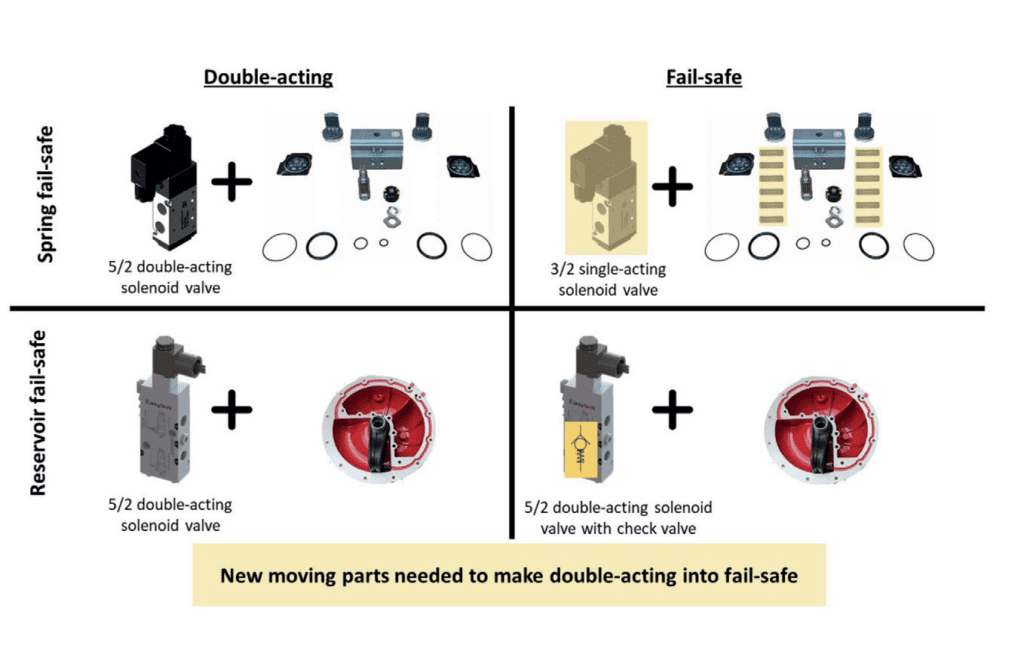The challenge with fail-safe processes within air reservoirs can be boiled down to the lack of standardization that results in complicated and costly assemblies. Standardizing these processes can make all the difference and be immensely beneficial.
By Bob Donnelly
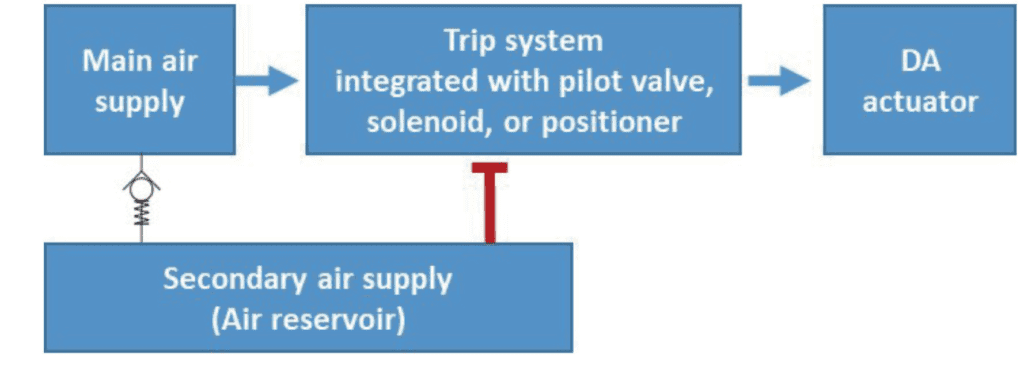
The Challenge Due to the complication and cost of integrating a fail-safe in an air reservoir, the decision to use air reservoirs over springs is determined based on the projected return on time and investment (ROI). Historically, the ROI for air reservoirs has only been worthwhile on large actuators or on vane actuators. Setting up air reservoirs for fail-safe is equally as complicated on a large actuator as on a small actuator. The difference in cost of a large spring return more than absorbs the necessary fixed cost to set up an air reservoir system. For vane actuators, the clock spring adds significant weight, cost, and complexity of manufacturing.

However, the basic premise of how failsafe within air reservoirs work is as simple as understanding how double-acting actuators work. When the main air supply is normal, the open and close motion of the double-acting actuator is powered by the main air supply, see Figure 1. When the main air supply is abnormal, the open or close motion to drive the actuator to the fail position is powered by a secondary air supply. The secondary air supply could be thought of as a separate supply airline, or an air reservoir separated from the main air supply with a check valve, see Figure 2.
While simple in concept, the historical market failure of fail-safes within air reservoirs has been in the complexity of integrating all the various components (main air supply, secondary air supply, trip system with pilot valve, solenoid, or positioner with the actuator). Each individual component and connection between the components are custom, making it a high-costing and time consuming expenditure.
The Solution
A solution to the complexity and cost of fail-safes within air reservoirs is to unify and standardize the components. Rather than treating the actuator and the secondary air supply as independent components, it is recommended that the two pressure vessels be unified under one body.
In addition, it is suggested that the user unify the trip system and check valve with either a solenoid valve, pilot valve, or positioner into one control system.
When the actuator and the control system (trip system and check valve with either a pilot valve, solenoid, or positioner) are unified, integrating the actuator becomes far simpler, much like integrating two standardized components or assembling a solenoid valve on an actuator (two bolts). The cost of integrating a fail-safe air reservoir approaches zero. This is how a fail-safe with an air reservoir package would look:

The airflow is the same as traditional fail-safe within air reservoirs. When the main air supply is normal, the open and close motion of the double-acting actuator is powered by the main air supply, see Figure 3. When the main air supply is abnormal, the failure to open or failure to close motion is powered by a secondary air supply, see Figure 4.

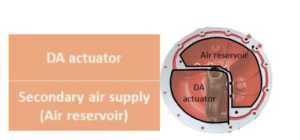
Result and Savings
By unifying and standardizing disparate components, the cost of utilizing an air reservoir for fail-safe approaches zero. As a result, the operational and financial calculus between using air reservoirs versus springs for fail-safe fundamentally changes across both small and large actuators. The implication is improved safety, as well as more solutions and benefits for the end-user.
Construction simplicity
Converting a double-acting actuator into a spring-return actuator system requires many new components. Specifically, adding many springs in the actuator and changing double-acting 5/2 solenoid valve to a single-acting 3/2 solenoid valve. On the other hand, with a comprehensive smart air-reservoir fail-safe system, converting between double-acting to fail-safe can be as simple as deciding whether or not to incorporate a check valve inside the same solenoid valve. In effect, it exchanges the complexity of adding multiple moving springs into actuators to only adding a singular check valve. From a failure mode and effects analysis, this greatly reduces the potential failure points in a system. Furthermore, springs in spring-return actuators will see environmental air that could be corrosive, the check valve will only see instrument air.

Indirect cost
A smart air-reservoir fail-safe system not only allows the quick and easy conversion between double-acting and fail-safe (can be as easy as incorporating a check valve or not) but converting an actuator between fail-close and fail-open is as easy as reversing the air supply to the actuator. This is as easy as mounting the control system, such as the solenoid valve, upside down. See Figure 5. With spring-return actuators, everything inside the actuator has to be reinstalled in reverse. The simplicity of converting between double-acting, fail-close or failopen reduces the necessary inventory required to cover all actuation requirements and drastically reduces the labor time necessary for such conversion (less than two minutes).

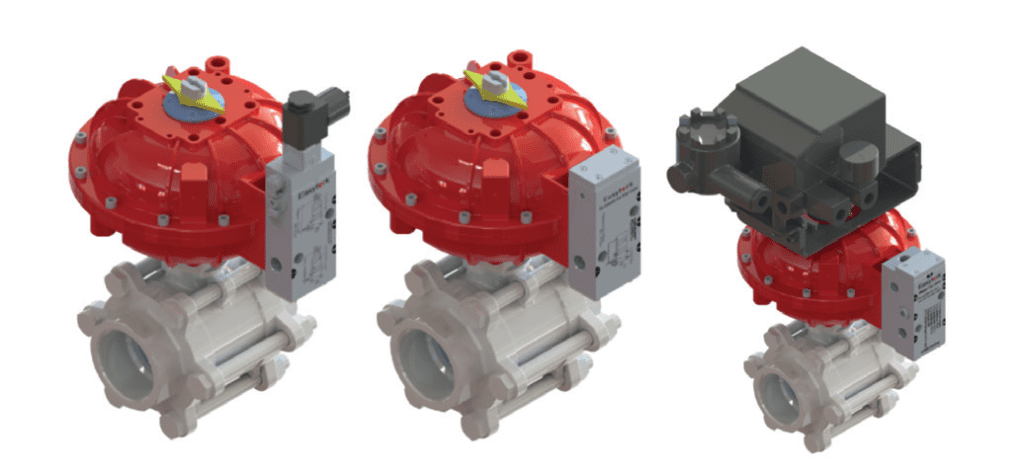
Direct cost
Air reservoirs have generally been used as an economical solution over large spring-return actuators for the simple reason that actuators do not have to be an extra-large size to generate the torque to overcome the spring and the valve. Springs eat up more than half (typically 65%) the torque of what actuators can generate, meaning the actuator has less than half (usually 35%) of the torque available to the valve.
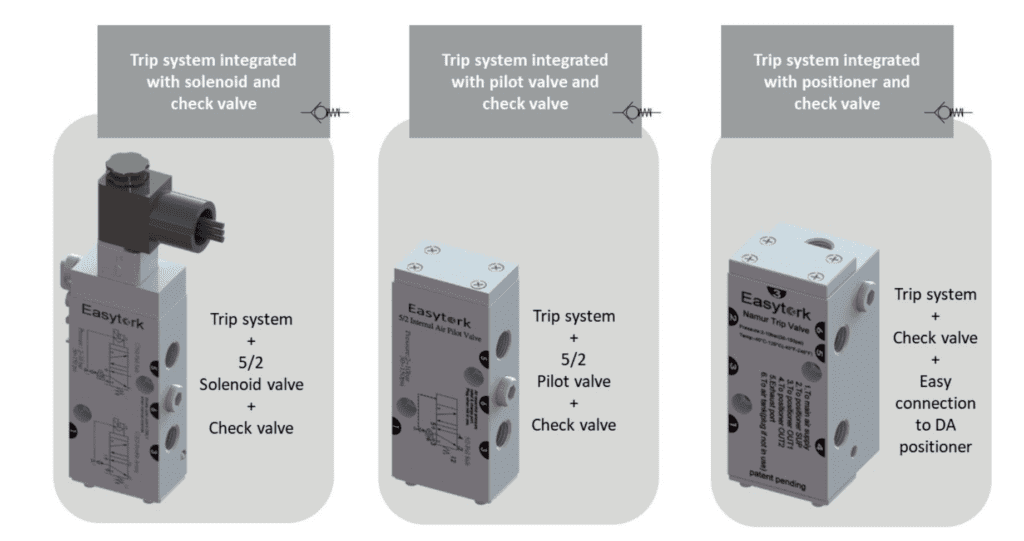
Air reservoirs do not have to contend with springs, so only a smaller size upgrade (less costly) is necessary. With the cost of incorporating air reservoirs approaching zero, this highly economical solution is now available to both small and large actuators. Most noticeably, this benefit is evident in the vane actuator market where the cost of spring-return actuators is already high in both small and large model sizes.
